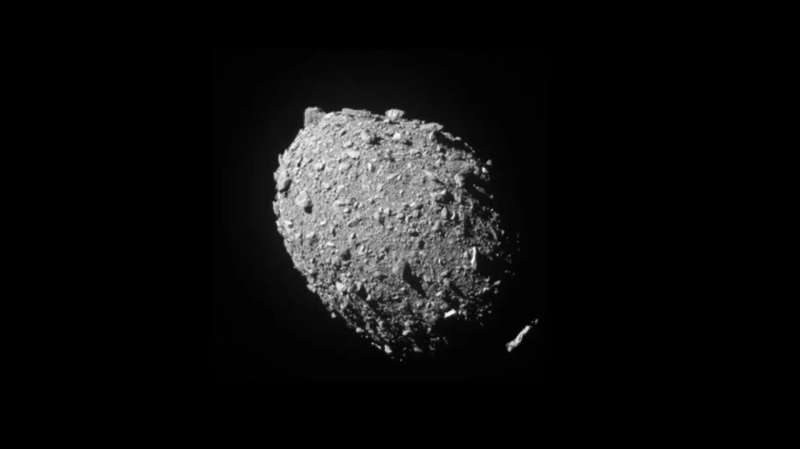NASA’s groundbreaking Double Asteroid Redirection Test DART mission made headlines when it successfully impacted the asteroid Dimorphos, demonstrating the feasibility of deflecting hazardous asteroids away from Earth’s path. Now, a study led by NASA’s Jet Propulsion Laboratory (JPL) reveals that DART’s impact not only altered the motion of Dimorphos but also reshaped its physical characteristics. This study marks a significant advancement in our understanding of asteroid dynamics and underscores the importance of planetary defense efforts.
DART’s Impact: Changing the Shape and Orbit of Dimorphos On September 26, 2022, DART made history by deliberately colliding with Dimorphos, a moonlet of the larger asteroid Didymos. Prior to the impact, Dimorphos exhibited a symmetrical “oblate spheroid” shape and orbited Didymos in a circular path. However, observations following the impact revealed a dramatic transformation in Dimorphos’ shape and orbit.
Lead researcher Shantanu Naidu and his team utilized data from multiple sources, including onboard instruments aboard DART, radar observations from the Goldstone Solar System Radar, and ground-based telescopes. These comprehensive observations provided unprecedented insights into the aftermath of DART’s impact on Dimorphos.
From Spheroid to Ellipsoid: Understanding the Physical Changes Before the impact, Dimorphos resembled a squashed ball, but post-impact observations revealed a shift to a “triaxial ellipsoid” shape, akin to an elongated watermelon. This significant change in shape indicates the extensive impact of DART’s kinetic impactor on Dimorphos’ surface composition and internal structure.
Additionally, the study found that Dimorphos’ orbit underwent a profound transformation. Its orbital period, the time taken to complete one orbit around Didymos, shortened by 33 minutes and 15 seconds following the impact. Moreover, the orbit evolved from a circular path to a slightly elongated or eccentric trajectory, indicating the disruption caused by DART’s impact.
Insights from Light Curves: Unraveling Dimorphos’ Orbital Dynamics By analyzing the light curves captured by ground-based telescopes during mutual events between Dimorphos and Didymos, researchers gained valuable insights into the orbital dynamics of Dimorphos. These observations revealed subtle timing differences in the events, indicating deviations from its original circular orbit.
Moreover, the precise measurements enabled researchers to discern Dimorphos’ rocking motion as it orbits Didymos, highlighting the intricate interplay between gravitational forces and the asteroid’s altered dynamics.
Implications for Planetary Defense and Future Missions The findings of this study have significant implications for planetary defense strategies and our understanding of asteroid behavior. DART’s successful demonstration of asteroid deflection technology not only validates its efficacy but also provides crucial data for future mitigation efforts.
Furthermore, the study sheds light on the composition and structure of Dimorphos, indicating its classification as a loosely packed “rubble pile” object akin to asteroid Bennu. This classification underscores the importance of follow-up missions, such as ESA’s Hera mission, slated to launch in October 2024, which will conduct a detailed survey of Dimorphos and confirm the impact of DART’s mission.
NASA’s DART mission has revolutionized our understanding of asteroid dynamics and demonstrated the feasibility of asteroid deflection technology. By reshaping the physical characteristics and orbit of Dimorphos, DART has provided valuable insights into the behavior of near-Earth asteroids and paved the way for enhanced planetary defense strategies. As we continue to explore the cosmos, studies like these exemplify the collaborative efforts of scientists worldwide to safeguard our planet from potential asteroid threats and unravel the mysteries of the universe.
